Greetings, fellow StarGeezers! It’s Friiiii day… And another great weekend forecast. Does having all this Moon around get you down? It shouldn’t. Where else could you find another world that you could so intimately study detail with even the most modest of telescopes or binoculars? Instead of cursing Luna’s presence, get out your optics and enjoy! While we’re at it, we’ll take a look at some very interesting stars – both in the sky and from planet Earth. It’s time to head out into the dark… Cuz’ here’s what’s up!
Friday, November 7, 2008 – Today in 1996, the Mars Global Surveyor left on its journey. Just 30 years beforehand on this same day, Lunar Orbiter 2 was launched. Tonight let’s launch our way toward the Moon as we begin our observing evening with a look at a far northern crater – J. Herschel.
Residing on the mid-northern edge of Mare Frigoris, this huge, shallow old crater spans 156 kilometers and bear the scars of the years. Look for the deeper and younger crater Horrebow on the southwestern wall – for it has obliterated another, older wall crater.
Ready to aim for a bullseye? Then follow the “Archer” and head right for the bright, reddish star Aldebaran. Set your eyes, scopes or binoculars there and let’s look into the “eye” of the Bull.
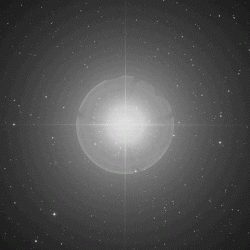 Known to the Arabs as Al Dabaran, or “the Follower,” Alpha Tauri got its name because it appears to follow the Pleiades across the sky. In Latin it was called Stella Dominatrix, yet the Olde English knew it as Oculus Tauri, or very literally the “eye of Taurus.” No matter which source of ancient astronomical lore we explore, there are references to Aldebaran.
Known to the Arabs as Al Dabaran, or “the Follower,” Alpha Tauri got its name because it appears to follow the Pleiades across the sky. In Latin it was called Stella Dominatrix, yet the Olde English knew it as Oculus Tauri, or very literally the “eye of Taurus.” No matter which source of ancient astronomical lore we explore, there are references to Aldebaran.
As the 13th brightest star in the sky, it almost appears from Earth to be a member of the V-shaped Hyades star cluster, but this association is merely coincidental, since it is about twice as close to us as the cluster is. In reality, Aldebaran is on the small end as far as K5 stars go, and like many other orange giants, it could possibly be a variable. Aldebaran is also known to have five close companions, but they are faint and very difficult to observe with backyard equipment. At a distance of approximately 68 light-years, Alpha is “only” about 40 times larger than our own Sun and approximately 125 times brighter. To try to grasp such a size, think of it as being about the same size as Earth’s orbit! Because of its position along the ecliptic, Aldebaran is one of the very few stars of first magnitude that can be occulted by the Moon.
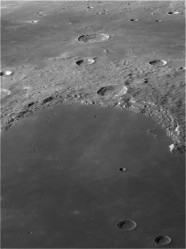 Saturday, November 8, 2008 – Even if you only use binoculars tonight, you can’t miss the beautiful C-shape of Sinus Iridum as it comes into view on the lunar surface. As we have learned, the mountains ringing it are called the Juras, and the crater punctuating them is named Bianchini. Do you remember what the bright tips of the opening into the “Bay of Rainbows” are called? That’s right: Promontorium LaPlace to the northeast and Promontorium Heraclides to the southwest. Now take a good look at Heraclides… Just south of here is where Luna 17 landed, leaving the Lunokhod rover to explore!
Saturday, November 8, 2008 – Even if you only use binoculars tonight, you can’t miss the beautiful C-shape of Sinus Iridum as it comes into view on the lunar surface. As we have learned, the mountains ringing it are called the Juras, and the crater punctuating them is named Bianchini. Do you remember what the bright tips of the opening into the “Bay of Rainbows” are called? That’s right: Promontorium LaPlace to the northeast and Promontorium Heraclides to the southwest. Now take a good look at Heraclides… Just south of here is where Luna 17 landed, leaving the Lunokhod rover to explore!
 Born on this day in 1656, the great Edmund Halley made his mark on history as he became best known for determining the orbital period of the comet which bears his name. English scientist Halley had multiple talents however, and in 1718 discovered that what were then referred to as “fixed stars,” actually displayed (proper) motion! If it were not for Halley, Sir Isaac Newton may never have published his now famous work on the laws of gravity and motion.
Born on this day in 1656, the great Edmund Halley made his mark on history as he became best known for determining the orbital period of the comet which bears his name. English scientist Halley had multiple talents however, and in 1718 discovered that what were then referred to as “fixed stars,” actually displayed (proper) motion! If it were not for Halley, Sir Isaac Newton may never have published his now famous work on the laws of gravity and motion.
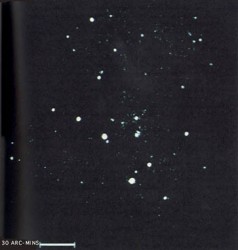 Now turn your eyes or binoculars just west of bright Aldebaran and have a look at the Hyades Star Cluster. As noted yesterday, Aldebaran appears to be part of this large, V-shaped group, but is not an actual member. The Hyades cluster is one of the nearest galactic clusters, and it is roughly 130 light-years away at its center. This moving group of stars is drifting slowly away toward Orion, and in another 50 million years will require a telescope to view!
Now turn your eyes or binoculars just west of bright Aldebaran and have a look at the Hyades Star Cluster. As noted yesterday, Aldebaran appears to be part of this large, V-shaped group, but is not an actual member. The Hyades cluster is one of the nearest galactic clusters, and it is roughly 130 light-years away at its center. This moving group of stars is drifting slowly away toward Orion, and in another 50 million years will require a telescope to view!
 Sunday, November 9, 2008 – Today is the birth date of Carl Sagan. Born in 1934, Sagan was an American planetologist, exobiologist, popularizer of science and astronomy, and novelist. During his lifetime, Sagan published more than 600 scientific papers and popular articles and was author, co-author, or editor of more than 20 books. His influential work and enthusiasm inspired us all. As Dr. Sagan once said, “Personally, I would be delighted if there were a life after death, especially if it permitted me to continue to learn about this world and others, if it gave me a chance to discover how history turns out.”
Sunday, November 9, 2008 – Today is the birth date of Carl Sagan. Born in 1934, Sagan was an American planetologist, exobiologist, popularizer of science and astronomy, and novelist. During his lifetime, Sagan published more than 600 scientific papers and popular articles and was author, co-author, or editor of more than 20 books. His influential work and enthusiasm inspired us all. As Dr. Sagan once said, “Personally, I would be delighted if there were a life after death, especially if it permitted me to continue to learn about this world and others, if it gave me a chance to discover how history turns out.”
May his dreams live on..
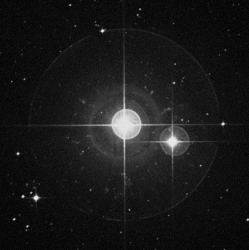 If Carl were with us tonight, he would encourage amateurs at every level of astronomical ability! So let us honor his memory by beginning with an optical pairing of stars known as Zeta and Chi Ceti, a little more than a fistwidth northeast of bright Beta. Now have a look with binoculars or small scopes because you’ll find that each has its own optical companion!
If Carl were with us tonight, he would encourage amateurs at every level of astronomical ability! So let us honor his memory by beginning with an optical pairing of stars known as Zeta and Chi Ceti, a little more than a fistwidth northeast of bright Beta. Now have a look with binoculars or small scopes because you’ll find that each has its own optical companion!
Now drop south-southwest less than a fistwidth to have a look at something so unusual that you can’t help but be charmed – the UV Ceti System (RA 01 39 01 Dec -17 57 01).
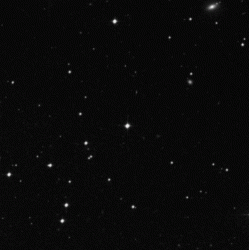 What exactly is it? Also known as L 726-8, you are looking at two of the smallest and faintest stars known. This dwarf red binary system is the sixth nearest star to our solar system and resides right around nine light-years away. While you are going to need at least an intermediate-size scope to pick up these near 13th magnitude points of light, don’t stop observing right after you locate it. The fainter member of the two is what is known as a “Luyten’s Flare Star” (hence the “L” in its name). Although it doesn’t have a predictable timetable, this seemingly uninteresting star can jump two magnitudes in less than 60 seconds and drop back to “normal” within minutes – the cycle repeating possibly two or three times every 24 hours. A most incredible incident was recorded in 1952 when UV jumped from magnitude 12.3 to 6.8 in just 20 seconds!
What exactly is it? Also known as L 726-8, you are looking at two of the smallest and faintest stars known. This dwarf red binary system is the sixth nearest star to our solar system and resides right around nine light-years away. While you are going to need at least an intermediate-size scope to pick up these near 13th magnitude points of light, don’t stop observing right after you locate it. The fainter member of the two is what is known as a “Luyten’s Flare Star” (hence the “L” in its name). Although it doesn’t have a predictable timetable, this seemingly uninteresting star can jump two magnitudes in less than 60 seconds and drop back to “normal” within minutes – the cycle repeating possibly two or three times every 24 hours. A most incredible incident was recorded in 1952 when UV jumped from magnitude 12.3 to 6.8 in just 20 seconds!
No matter what you choose to look at tonight, as Dr. Sagan would say: “We are all star stuff.”
Have a great week and I’ll see you… Under the stars!
This week’s awesome photos are: Crater J. Herschel – Credit: Wes Higgins, Aldebaran – Credit: Palomar Observatory, courtesy of Caltech, Sinus Iridum – Credit: Wes Higgins, Edmund Halley (widely used public image), The Hyades Star Cluster – Credit: NASA, Carl Sagan (widely used public image), and Chi and the UV Ceti System – Credit: Palomar Observatory, courtesy of Caltech. Our many thanks to you!

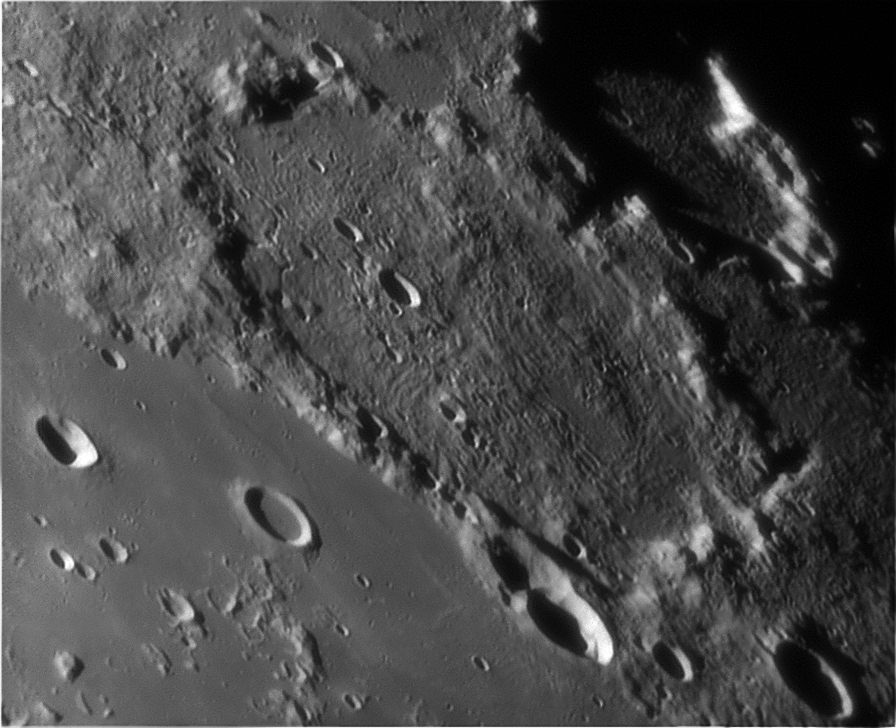
Ouch! This animation… ouch!…
A satellite orbiting at 40º northern latitude? Another one at 45º?
Ouch!…
better??
i was just havin’ one of those “third rock from the sun” kinda’ daze…
😉
WOOHOO I’m famous! 🙂 But don’t follow me this weekend, it’s cold, and snowy.
Thanks Tammy, and Happy Birthday Carl!
@Tammy:
🙂